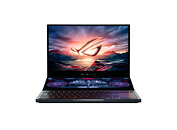Silicon Motion's Gen 5 SSD Controller is Called MonTitan, Reaches 14 GB/s, But Enterprise Only
Silicon Motion Technology Corporation ("Silicon Motion"), a global leader in designing and marketing NAND flash controllers and solid-state storage devices today announces MonTitan, a PCIe Gen5 SSD solution platform perfectly suited for the most challenging Datacenter and Enterprise applications. Silicon Motion's new MonTitan platform features an entirely new, purpose-built ASIC and FW architecture, optimized for performance and QoS. Its unique Layered FW stack enables the development of customer differentiated solutions with a high degree of flexibility and accelerated time to market, all while reducing engineering cost.
"SSD storage solutions are evolving to address new challenges in data centers which demand changes in storage platforms and operating models," said Nelson Duann, Silicon Motion's Senior Vice President of Marketing and R&D. "Our MonTitan SSD solution is an innovative PCIe Gen5 SSD platform designed to satisfy the unique demands of datacenters today while providing flexibility and programmability to meet future evolving standards."
"SSD storage solutions are evolving to address new challenges in data centers which demand changes in storage platforms and operating models," said Nelson Duann, Silicon Motion's Senior Vice President of Marketing and R&D. "Our MonTitan SSD solution is an innovative PCIe Gen5 SSD platform designed to satisfy the unique demands of datacenters today while providing flexibility and programmability to meet future evolving standards."




































